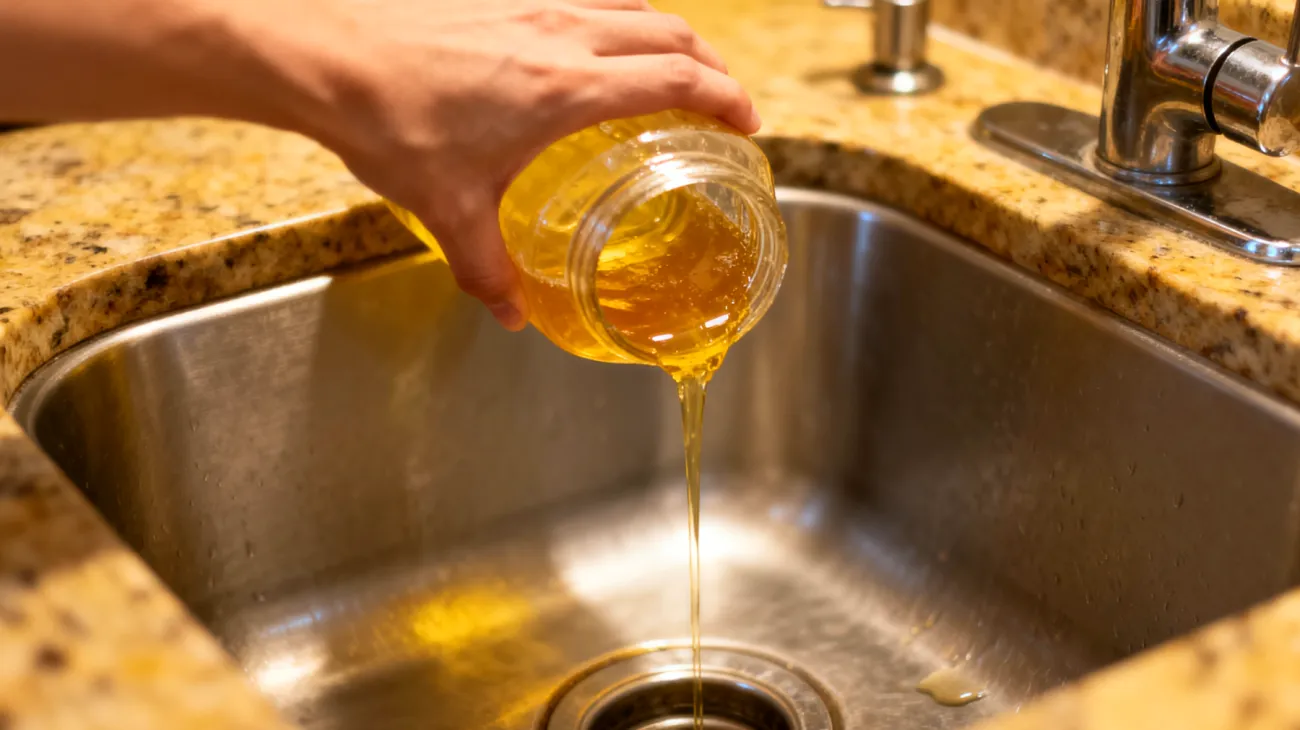There’s a rhythm to the home that shifts subtly with the seasons: windows breathe differently, furnaces or air conditioners hum louder or quieter, and cooking habits evolve with temperature and tradition. But one part of the house adapts in silence, until it doesn’t — your drains. The relationship between climate patterns, household water behavior, and drainage functionality is complex — and rarely talked about until a problem is encountered.
What often begins as a seemingly insignificant slow drain can escalate into something far more serious. From autumn leaf debris to winter freeze risks, and the spring-summer spike in water usage, seasonal transitions place serious stress on home drainage systems. The consequences can range from minor inconveniences to major structural damage, including pipe blockages, overflows, or even burst pipes, especially when early warning signs are overlooked or dismissed as temporary issues.
Understanding this dynamic gives homeowners a distinct preventive edge, but it requires more than just basic awareness. It demands a strategic approach that aligns maintenance practices with the natural rhythms of seasonal change. Addressing these challenges isn’t about overhauling your plumbing system or investing in expensive equipment. Instead, it’s about timing small actions efficiently throughout the year to keep your system flowing harmoniously with the seasons.
The Chain Reaction: Why Seasonal Cycles Overwhelm Household Drains
Drains are not closed systems operating in isolation; they interact continually with what’s washed down them and what surrounds them — from rooftop gutters to basement floors. This interconnected nature means that changes in one area can create cascading effects throughout the entire drainage network. The materials that enter your drains, the temperature fluctuations that affect pipe integrity, and the varying water volumes that flow through your system all contribute to a complex web of seasonal challenges.
Different seasons present distinct and often overlapping challenges that can overwhelm even well-maintained systems. In autumn, falling leaves and dry outdoor debris can clog exterior and underground drains, while simultaneously, indoor cooking patterns shift toward heavier, grease-laden meals. This seasonal cooking transition means more fats, oils, and starchy substances find their way into kitchen sinks just as outdoor drainage systems are becoming compromised by organic debris.
Winter brings perhaps the most dramatic challenges, with freezing temperatures creating the serious danger of frozen pipe segments and the resulting pressure-induced bursts. The physics of water expansion during freezing can generate tremendous force within confined pipe spaces, and even partial clogs can create cold traps where ice formation becomes more likely. These frozen blockages don’t just stop water flow; they can create pressure differentials that stress pipe joints and fittings throughout the system.
Spring often arrives with a surge of increased water usage that can catch homeowners off guard. Deep cleaning rituals, increased laundry loads, garden watering, and more frequent hand washing all contribute to higher volumes flowing through drain lines that may have been weakened or partially compromised during the winter months. This increased demand often reveals problems that developed during colder periods but remained hidden until higher flow rates exposed them.
Summer presents its own unique combination of challenges. Sudden storm events can overwhelm exterior drainage systems, while indoor drains face new burdens from sunscreen residue, sand tracked in from outdoor activities, and increased shower frequency. The combination of higher water usage and different types of debris creates conditions that can accelerate the formation of stubborn blockages.
Monthly Maintenance that Actually Works
The key to effective drain maintenance lies in aligning care routines with seasonal activity levels and environmental conditions rather than following rigid, calendar-based schedules. This approach recognizes that drain systems face different types and intensities of stress throughout the year, requiring adaptive maintenance strategies that respond to these changing conditions.
Two common household ingredients, when used correctly and at appropriate intervals, can do more to support drain health than many expensive commercial products. Baking soda and boiling water aren’t miracle solutions, but they’re perfectly suited for routine soft-maintenance that breaks down early buildup before it progresses into full blockages that require professional intervention.
The monthly flush process involves several carefully sequenced steps. Begin by boiling approximately one liter of water, then slowly pour it down the target drain to help melt and dislodge soft grease residues that have accumulated since the last treatment. Follow this with half a cup of baking soda poured directly into the drain, ensuring it reaches the trap area where most buildup occurs.
Add one cup of white vinegar and immediately cover the drain opening with a plug, cloth, or rubber stopper to contain the resulting chemical reaction. Allow the mixture to fizz and work for five to ten minutes, during which the alkaline-acid reaction helps break down organic matter and neutralize odor-producing bacteria. Complete the process with another flush of boiling water to carry away loosened debris and restore normal flow patterns.
This process accomplishes several important maintenance goals simultaneously. It dissolves light organic buildup before it can harden into stubborn blockages, neutralizes the bacteria responsible for drain odors, and disrupts the biofilm that naturally thickens with every passing month. When performed consistently every four to five weeks, this routine prevents most early signs of clogging, particularly in kitchen sinks and bathroom drains where organic matter accumulates most rapidly.
Why Drain Covers Are More Than Just Filters
Many homeowners dismiss drain strainers and cover inserts as cosmetic accessories or view them as annoying obstacles to normal drain use. However, these devices serve as mechanically decisive tools that provide the first line of defense against the seasonal debris that threatens drainage systems throughout the year.
During autumn months, front and backyard drains face increased exposure to leaf matter, twigs, and organic debris that can accumulate faster than normal water flow can flush away. Even small amounts of this material can create partial blockages that trap additional debris, leading to compound clogs that require professional cleaning. Quality drain covers with appropriate mesh sizes prevent this initial accumulation while allowing normal water flow to continue unimpeded.
Installing drain covers with easy-lift handles transforms routine cleaning from a challenging chore into a simple 60-second task that can prevent expensive professional hydrojetting sessions. Choose models designed to fit flush with drain surfaces and featuring fine mesh or micro-perforated plates that balance effective filtration with unrestricted water flow during normal use.

Holiday Cooking: Why It Clogs More Than Just Your Arteries
The winter holiday season and early-year communal dining periods introduce significantly more fat and starch into home drainage systems than most homeowners realize. This seasonal increase in rich food preparation creates conditions that can overwhelm drains that function perfectly well during lighter cooking periods throughout the rest of the year.
Understanding the science behind grease-related clogs reveals why holiday cooking poses such a significant threat to drainage systems. Cooking grease and fat do not remain liquid after being poured down drains, despite appearing to flow smoothly at the time of disposal. Starting around 30 to 35 degrees Celsius, these substances begin solidifying—often right at the point where hot dishwater meets cooler pipe sections.
The worst offenders during cold-weather cooking seasons include:
- Pan drippings from roasts, bacon, and duck
- Starchy water from preparing mashed potatoes, which contains loads of dissolved starch that gels upon cooling
- Gravy residues and oily sauce remnants
- Batter or dough fragments containing flour that swells and hardens when exposed to water
Developing effective solutions requires changing disposal habits rather than relying on drain treatments after problems develop. Maintaining a designated grease container or jar near cooking areas, lined with foil or disposable mesh inserts, allows fats and oils to cool and solidify safely before disposal with solid waste. This simple practice prevents these materials from ever entering the drainage system where they can cause problems.
Freezing Pipes: A Silent Threat That Begins With Partial Clogs
Most homeowners correctly associate frozen pipe risks with exposed plumbing runs or inadequately insulated wall cavities. While these locations certainly face elevated freezing risks, it’s often an existing partial clog that creates the initial conditions necessary for freezing problems to develop, even in pipes that should theoretically be protected from temperature extremes.
The relationship between drainage blockages and freezing susceptibility involves fundamental principles of fluid dynamics and heat transfer. A pipe containing freely moving water maintains more consistent temperatures throughout its length, as flowing water carries heat from warmer areas and prevents localized cooling. When water flow becomes interrupted or restricted by accumulated debris, it slows significantly, allowing more time for heat transfer to surrounding materials.
Effective freeze prevention strategies must address both temperature protection and flow maintenance. Ensuring all drains and traps receive thorough clearing in the weeks before first frost eliminates the partial blockages that create stagnation points. During cold snaps, keeping cabinet doors open under sinks allows warm indoor air to circulate around pipe runs that might otherwise be isolated in cooler microclimates.
Strategic Spring Checks: Drains at Their Most Vulnerable Volume
Spring brings renewal and unfortunately, heavy water usage that can expose weaknesses that developed during winter months. This seasonal transition represents the period when pipes reveal problems that cold weather may have hidden or when increased demand overwhelms systems already stressed by months of challenging conditions.
Systematic spring drain evaluation should include checking for slow drainage that shows signs of compaction, indicated by gurgling sounds, backflow during heavy use, or persistent odors that suggest organic buildup. External drainage systems require inspection to ensure rooftop and backyard drains remain clear of debris accumulated during fall and winter months.
Spring cleaning routines should include pouring approximately one liter of water down each rarely used drain, including garage floor drains, utility sinks, and basement trap systems. This practice restores the water seal in trap systems that may have evaporated during periods of disuse, preventing sewer gases from backing into living spaces—a less visible but potentially dangerous springtime problem that affects indoor air quality.
Small Adjustments, Large Savings: Smart Prevention Moves
Effective drain problem prevention involves addressing not just the accumulation of debris, but also synchronization failures—misalignments between system capacity and seasonal demand patterns that create conditions where normal use overwhelms available drainage capability.
Installing quality stainless steel mesh strainers for kitchen sinks, bathroom drains, and utility drainage points represents a minimal investment—typically under ten dollars per unit—that provides ongoing protection against the debris accumulation that leads to serious blockages. These devices pay for themselves many times over by preventing the need for professional cleaning services or emergency repairs.
For homeowners in areas with significant tree coverage, scheduling professional drain inspections each autumn addresses the increased risk of root intrusion into underground pipes. Root systems naturally seek moisture sources more aggressively during fall months, and even small root incursions can create catch points that trap debris and accelerate blockage formation over time.
Monthly use of enzymatic bio-cleaners provides ongoing maintenance benefits for households with pets or residents with longer hair, as these products gradually dissolve organic buildup without the harsh chemicals that can degrade pipe linings over time. Unlike fast-acting acids that provide temporary relief while potentially causing long-term damage, biological cleaners work with natural processes to maintain system health.
While drainage systems don’t follow calendar schedules, they do respond predictably to seasonal patterns of use, environmental stress, and maintenance attention. When drain care routines align with natural cycles of temperature change, debris accumulation, and cooking patterns, home drainage systems demonstrate remarkable longevity and reliability.
The proactive homeowner doesn’t need to micromanage plumbing systems through constant attention and expensive interventions. Instead, success comes from collaborating with seasonal rhythms, allocating small amounts of time each month to maintenance activities that provide significant returns in system longevity, cost savings, and the peace of mind that comes from reliable plumbing performance. The investment required for effective seasonal drain maintenance measures in minutes per month and dollars per year, while the potential savings extend into thousands of dollars in avoided repairs and the invaluable convenience of systems that continue working when needed most.
Indice dei contenuti

